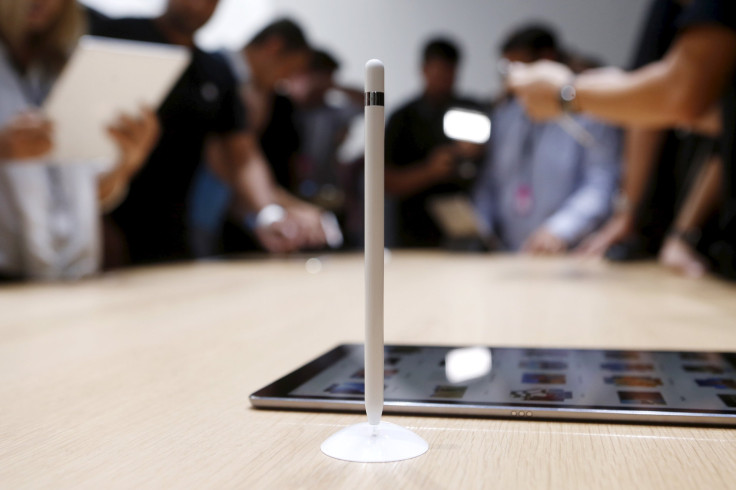Apple Quietly Upgrading Apple Pencil With More Advanced Features

Graphic artists who use the iPad know that the Apple Pencil is an invaluable tool that makes artwork and editing easy. The Apple accessory allows users to sketch, draw and paint as if they're using a real-life pencil or paintbrush.
Unlike real-life pencils and paintbrushes, however, the Apple Pencil doesn't show what color the artist currently uses. Artists need to look at the iPad's screen to see what brush and color they are using. Failure to see what's being used can result to unwanted mishaps and, for artists that are in a hurry, stress over lost time spent undoing or erasing mistakes.
A new patent application, however, shows Apple's interest in preventing all of that unnecessary stress from happening. The patent application, published by the U.S. Patent and Trademark Office, reveals Cupertino's plans to equip future Apple Pencils with a textual/graphical display with touch sensitivity.
This display, the patent claimed, will allow users to identify the colors they are using when working. It will also allow users to navigate content display on it, such as selecting the colors they prefer to use – all without having to touch the iPad.
Pencil details
The patent specified that the display can be positioned so that it could conveniently indicate the color being used. This means it might be placed near the tip of the Apple Pencil, or if based on patent illustrations, near the area where the thumb usually rests. The display can have a “conical or frusticonical” shape depending on where it is placed.
The display can have one or more sensors to detect user input. The diminutive screen will have the ability to display several colors at one time, and will allow users to select from these colors with a simple tap. The display will also allow users to select from a variety of actions, such as “draw,” “erase,” or “edit.”
The Apple Pencil will communicate this information to a paired device such as an iPad, which will respond accordingly. This technology, in effect, will allow users to create graphics and other artwork faster than ever before.
The patent also indicates that the Apple Pencil can be fitted with more components such as “orientation detectors, gyroscopes, accelerometers, biometric readers, displays, sensors, switches, buttons, speakers, microphones, cameras, voice coils, haptic feedback devices, and/or other components.”
This new patent application is different from a previous patent about an Apple Pencil with a touch-sensitive surface and eraser.

© Copyright IBTimes 2025. All rights reserved.




















